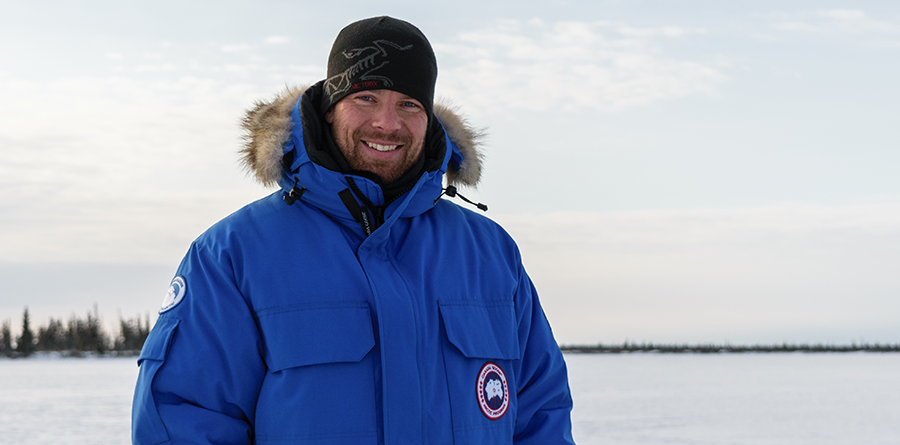A 'beary' interesting trip to China
January 13, 2017

January 13, 2017

Nicholas Pilfold’s (BSc 2007 Life Sciences) passion is studying bears and traveling to distant places. His career as a wildlife researcher has landed him in some tricky situations—like having to jump start a car near a pride of African lions. Now he’s headed to China to help conserve giant pandas.
There’s a planned trip to China this spring. San Diego Zoo Global has a long-standing relationship with the Institute of Zoology at the Chinese Academy of Sciences, working in the Foping Nature Reserve. We’re assisting in projects on mating behavior, dispersal, denning ecology, health status, and the effects of human disturbance on wild giant pandas. This will be my first trip to China, and I am looking forward to helping conservation efforts for giant pandas.
Growing up just east of UBC in the Fraser Valley, black bears were a common sight in our backyard, and I always enjoyed having the chance to see them. I was also fascinated with remote far-off places. My passion for ecology was ignited as an undergraduate at UBC, and I remember courses led by Carl Walters, Roy Turkington and Wayne Goodey in particular.
I did my doctorate on polar bears with Andrew Derocher at the University of Alberta. I was able to travel to some of the most remote areas on the planet and study the ecological interactions between seals and polar bears. Now I get to include work on Andean bears in Peru, giant pandas in China, and polar bears in the Arctic.
Over the years of doing wildlife research, I’ve encountered a variety of challenges. Whether it’s waiting for weather to clear to fly home from a small cabin in the high Arctic, helping evacuate an injured colleague down a narrow, steep path at night in the cloud forests of Peru with just a headlamp to light the way, or jump starting a vehicle that had stalled near a pride of lions in South Africa, they have all required a willingness to adapt to the conditions and think on one’s feet. I’m not sure there’s one single situation that really sticks out, and perhaps that’s a good thing.
I’m constantly learning. Just when I think I have nature figured out, it shows me something new. There’s a real high one gains from making a scientific discovery, no matter how impactful. Linking the processes and patterns in nature together is fascinating to me. Working for San Diego Zoo Global also allowed me to impact the conservation of wild animals and places. It’s my dream job to be able to see the world while thinking about the science underpinning the patterns of nature, and help conserve our planet’s last wild places.
I have a hard time sitting still for too long and have been involved in sport my whole life, whether it’s basketball, skiing, martial arts, triathlons or skydiving. I like to garden—I find it very relaxing to get my hands dirty and tend to a small set of plants. I travel a lot for work, but always try to find a few days of personal time to squeeze in side trips when I can. I can’t pass up the opportunity for a road trip, or weekend camping.
UBC alumni, do you have an interesting career path, story or hobby you’d like to tell us about? E-mail us and we could feature you on our website.
UBC Science acknowledges that the UBC Point Grey campus is situated on the traditional, ancestral, and unceded territory of the xʷməθkʷəy̓əm.
Learn more: Musqueam First Nation